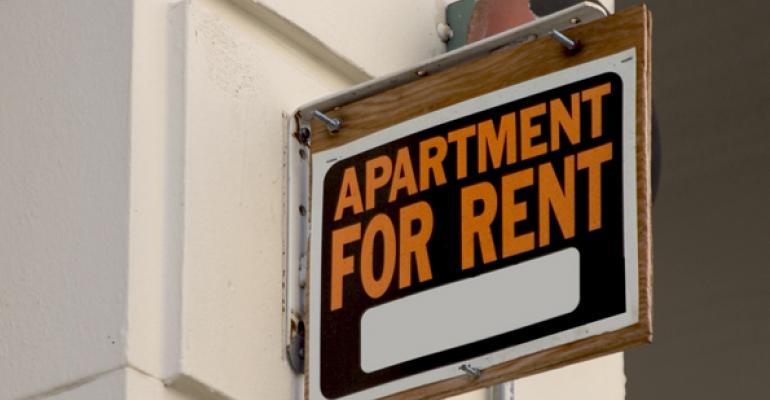It’s official--developers are finally building more new apartments than there are renters to fill them.
“The gap between demand and supply in the first quarter was a little larger than anticipated,” says Greg Willett, chief economist for market intelligence firm MPF Research, a division of RealPage.
Leading apartment researchers agree that the number of vacant apartments grew in the first quarter of this year, while rents grew at a slower pace. Some temporary uncertainty about the U.S. economy may have helped cause this weaker demand; however, market researchers have expected the vacancy rate to creep higher for a long time.
Economy jitters
Demand for rental apartments stumbled in the first months of this year, according to MPF. The number of occupied apartments only grew 20,077 during the period. That’s less than half the 40,000 to 50,000 new occupied apartments that the industry has gotten used to seeing each first quarter over that last few years. Occupancy tends to lose a little momentum at the end of the year and then hold steady or climb a bit at the start of the next year, according to MPF.
“Uncertainty about the nation’s near-term economic outlook appears to be constraining new household formation and demand for all forms of housing,” says Willett. “The slight backtracking seen in the first quarter is significant because it runs counter to the normal pattern of seasonality in performance statistics.”
Vacancy inches up, as expected
Time will tell whether the improving outlook for the U.S. economy, which continues to produce roughly 200,000 new jobs a month, will lead to some renewed demand for apartments. However, top research firms agree that the percentage of vacant apartments will continue to inch higher this year, though the vacancy rate is still lower that the 95 percent level that most experts call “fully occupied.”
“Today’s occupancy rate is very tight,” says Willett. The percentage of vacant apartments rose 20 basis points to reach 4.3 percent in the first quarter, according to MPF. Other research firms reports similar findings. The percentage of vacant apartments rose 10 basis points to reach 4.5 percent, on average, in the first quarter of 2016, according to New York City-based research firm Reis Inc. That’s up from a low of 4.2 percent last year.
“The expectation was that demand would fall a little short of completions in 2016, leading to occupancy that's down a bit,” says Willett. “We're on the expected path.”
Developers opened 200,142 new apartments over the last 12 months. That’s the most new apartments opened in any 12-month period since 1988, when 216,167 new units came on-line, according to Reis.
Most to the new apartments are at class-A properties opening in top markets. Roughly one third of the apartments slated for delivery this year are in Dallas/Fort Worth, Houston, New York City, Seattle-Tacoma and Washington, D.C., according to brokerage firm Marcus & Millichap. Because of all this luxury construction, the vacancy rate for class-A apartments was 4.1 percent in the first quarter compared to 3.0 percent for class-B and class-C properties, according to the researchers at Marcus & Millichap.
“All of the increase in vacancy that we've been seeing has come from the class-A space,” says Ryan Severino, senior economist with Reis.
Rents rise anyway
Even as the vacancy rises, apartment owners are still able to increase their rents, however. Apartment rents grew 0.9 percent in the first quarter, compared to the quarter before and rents grew 5.0 percent compared to the year before, according to MPF.
Rents are still rising, but much more slowly, according to Reis. Effective rents grew just 0.5 percent in the first quarter from to the quarter before, compared to increases of at least 1.0 percent per quarter over the last few years. Effective rents were 4.5 percent higher in first quarter compared to the year before, though most of that increase happened in 2015.

